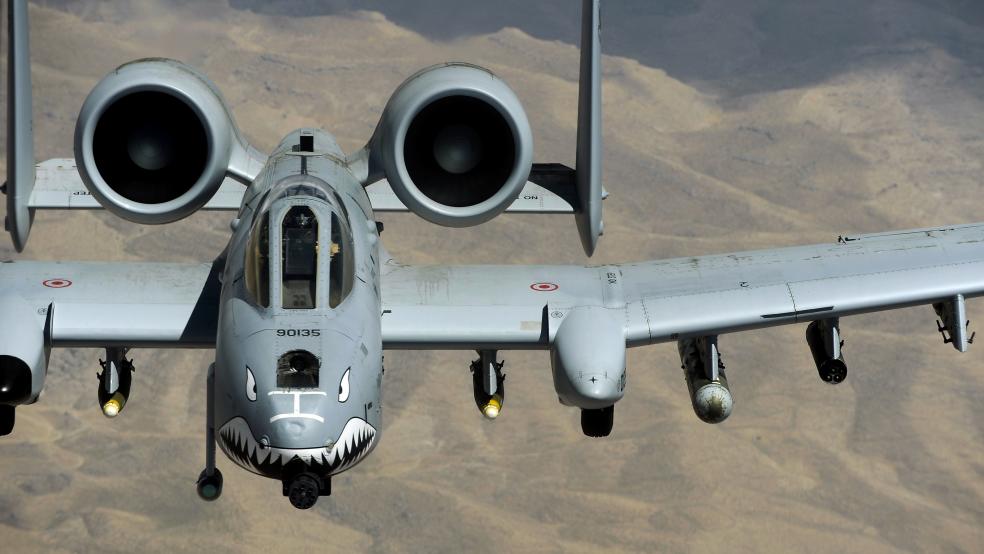The U.S. Air Force seems to have woken up to the fact that it can’t simply retire the A-10 Thunderbolt II attack jet.
The Air Force has waged a years-long campaign to scrap its A-10 fleet in a bid to save roughly $4 billion in operating costs. Service leaders have argued that the plane’s close air support mission can be performed by existing platforms, including the B-1 bomber and the highly-anticipated F-35 Joint Strike Fighter.
Related: Another F-35 Glitch Requires Restarting the Radar System – in Flight
Those arguments have met stiff resistance on Capitol Hill. Last week Senate Armed Services Committee chair John McCain (R-AZ) castigated Air Force Chief of Staff Gen. Mark Welsh over the lack of a viable substitute for the jet that has seen plenty of action in Iraq and Afghanistan.
The service’s fiscal year 2017 budget request indicated that the plane’s retirement would come in 2022. And Air Force officials seem to be finally admitting they need a low-cost support aircraft to fill the A-10’s role.
Flightglobal reports that the Air Force has begun to look at options to replace the service’s 283 A-10s, affectionately called “Warthogs.”
Related: Move Over, F-35: Russia Has Raised the Stakes for Next-Generation Fighters
The replacement aircraft would be used in low-intensity "permissive conflict,” much like the counter-terrorism battles that have dominated the wars in Afghanistan and Iraq. A possible indicator of what the service is looking for might be found in the recent use of a pair of OV-10 Broncos, developed during the Vietnam War, to fly more than a hundred sorties against ISIS forces inside Syria. The Broncos are light and simple, and very cheap to operate.
Here are some of the planes that could possibly replace the Warthog:
* Super Tucano. Developed by Embraer in Brazil, the turboprop aircraft has been used by about dozen militaries around the globe. The plane, which can be fitted with a variety of bombs and advanced munitions, might have a leg up in the competition since the Air Force last year bought 20 of the light attack aircraft for Afghanistan’s air force. The first four arrived in that country last month.
Related: Here’s the New, Secret Warplane Everyone Will Soon Be Talking About
Another possible plus for the Super Tucano: It costs about $1,000 an hour to fly, compared to the $11,500 for the A-10 and over $30,000 for the F-35.
* Scorpion. Produced by U.S. manufacturer Textron, the light attack jet has yet to find a single buyer. That may be because the aircraft, which went from the drawing board to a prototype in 24 months, isn’t as big as existing fighters but isn’t as small as some intelligence, surveillance and reconnaissance planes on the market today.
Despite its lack of sales, the Scorpion has garnered interest from U.S. military officials and other forces around the globe, and was on display at major international air shows last year, including the Paris Air Show.
* AT-6. The single-prop, Beechcraft plane has been integrated with over a dozen weapons, including multiple laser-guided rockets, missiles and bombs. Although the aircraft is typically used as a trainer, more militaries have begun to use it in their operations, including Iraq and Mexico.
* T-X platform. The Air Force is still holding a competition to replace its T-38 training plane. It is possible that a weaponized version of the new T-X trainer could fill the support role. However, the plane isn’t due until 2024, two years after the A-10’s expected retirement.
* T-50 Golden Eagle. The T-50 is a family of supersonic jets produced by Lockheed Martin and Korean Aerospace Industries. The FA-50 variant is a light attack aircraft that is already in service in the Philippines.





